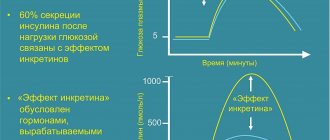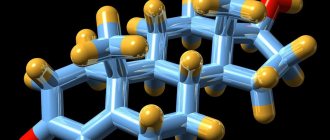Pipolphen®
With long-term use of the drug, it is necessary to systematically monitor the peripheral blood count and liver function.
With extreme caution, especially in high doses, Pipolfen should be prescribed to elderly patients, because This category of patients has an increased risk of developing side effects.
When used simultaneously with Pipolfen, analgesics and hypnotics should be prescribed in smaller doses.
Pipolfen® should be used under strict medical supervision simultaneously with opioid analgesics, sedatives and hypnotics, anesthetics, tricyclic antidepressants and tranquilizers.
Pipolfen® may mask the ototoxic effect (tinnitus and dizziness) of co-administered medications.
Pipolfen® reduces the seizure threshold. This should be taken into account when prescribing the drug to patients prone to developing seizures, or simultaneously with other drugs with similar effects.
As an antiemetic drug, Pipolfen® should be used only for prolonged vomiting of known etiology.
With long-term use, the risk of developing dental diseases (caries, periodontitis, candidiasis) increases due to a decrease in salivation.
During the treatment period, alcohol consumption is prohibited.
While taking Pipolfen, a diagnostic pregnancy test may give a false positive result.
A possible increase in blood glucose levels in patients taking Pipolfen® should be taken into account when performing a glucose tolerance test.
To prevent distortion of the results of skin prick tests for allergens, the drug must be discontinued 72 hours before allergy tests.
Each tablet contains 95 mg of lactose, which should be taken into account if you are lactose intolerant.
Use in pediatrics
Pipolfen® should be prescribed to children with caution, since this makes it difficult to diagnose the underlying disease. Symptoms of undiagnosed encephalopathy and Reye's syndrome may be mistaken for side effects of Pipolphen.
Impact on the ability to drive vehicles and operate machinery
During the initial period of using Pipolfen, it is necessary to refrain from driving vehicles and engaging in other potentially hazardous activities that require increased concentration and speed of psychomotor reactions. In the future, the degree of restrictions is determined depending on the patient’s individual tolerance.
Pipolfen solution for IV and IM administration 25 mg/ml 2 ml No. 10
Russian product name
Pipolfen®
English product name
Pipolphen®
Release form
Solution for intravenous and intramuscular administration
Description
Solution for intravenous and intramuscular administration
transparent, colorless or with a green tint, odorless or almost odorless.
| 1 ml | 1 amp. | |
| promethazine hydrochloride | 25 mg | 50 mg |
Excipients
: hydroquinone - 0.4 mg, potassium disulfite - 1.5 mg, anhydrous sodium sulfite - 2 mg, sodium chloride - 14 mg, liquid water - up to 2 ml.
2 ml - colorless glass ampoules with a break point and a blue code ring (5) - plastic cell packaging (2) - cardboard packs.
ATX codes
R06AD02 Promethazine
Clinical and pharmacological groups / Group affiliation
Histamine H<SUB>1 blocker
Active substance
promethazine hydrochloride
Pharmacotherapeutic group
Antiallergic agent - H<SUB>1
Storage conditions
List B. The drug should be stored in a place protected from light, out of reach of children at a temperature of 15° to 25°C.
Best before date
Shelf life: 5 years.
pharmachologic effect
Histamine H1 receptor blocker, phenothiazine derivative. It has pronounced antihistamine activity and has a significant effect on the central nervous system (has sedative, hypnotic, antiemetic, antipsychotic and hypothermic effects). Prevents and soothes hiccups.
Prevents histamine-mediated effects (including urticaria and pruritus). The anticholinergic effect causes a drying effect on the mucous membranes of the nose and mouth.
The antiemetic effect of promethazine is due to its central anticholinergic effect, a decrease in the excitability of the vestibular system, suppression of labyrinth function, as well as a direct inhibitory effect on the trigger chemoreceptor zones of the medulla oblongata.
The sedative effect is due to inhibition of histamine K-methyltransferase and blockade of central histamine receptors. It is also possible to block other CNS receptors, such as serotonin and cholinergic receptors; stimulation of α-adrenergic receptors indirectly weakens the stimulation of the reticular formation of the brain stem. Because its chemical structure is different from that of other phenothiazine antipsychotics, promethazine has a weaker antipsychotic effect.
In therapeutic doses it does not affect the cardiovascular system.
The clinical effect appears 2 minutes after IM administration or 3-5 minutes after IV administration and usually lasts for 4-6 hours (sometimes lasting up to 12 hours).
Indications
- allergic diseases (including urticaria, serum sickness, hay fever, allergic rhinitis, allergic conjunctivitis, angioedema, itching)
- auxiliary therapy of anaphylactic reactions (after relief of acute manifestations by other means, for example, epinephrine / adrenaline /)
- as a sedative in the pre- and postoperative period
- to prevent or relieve nausea and vomiting associated with anesthesia and/or appearing in the postoperative period
- postoperative pain (in combination with analgesics)
- kinetosis (to prevent and eliminate dizziness and nausea while traveling by transport)
- as a component of lytic mixtures used to potentiate anesthesia in surgical practice (for parenteral use).
Directions for use, course and dosage
Prescribed intramuscularly and intravenously.
Maximum daily dose for adults
is 150 mg.
The drug is prescribed intramuscularly for adults
25 mg 1 time/day, if necessary 12.5-25 mg every 4-6 hours.
For the prevention and treatment of nausea and vomiting
the drug is prescribed orally or intramuscularly at a dose of 25 mg once. If necessary, 25 mg can be prescribed every 4-6 hours.
As a sedative in surgery
on the eve of surgery, it is prescribed intramuscularly at a dose of 25-50 mg once at night.
For preoperative preparation,
50 mg of Pipolfen is administered intramuscularly 2.5 hours before surgery as part of lytic mixtures; if necessary, the administration can be repeated after 1 hour.
For induction of anesthesia and analgesia during certain diagnostic and surgical procedures, such as repeat bronchoscopy, ophthalmological operations,
Pipolfen® can be administered intravenously in doses of 0.15-0.3 mg/kg body weight.
Children over 2 months of age
the drug can be administered intramuscularly 3-5 times a day at a dose of 0.5-1 mg/kg body weight. In severe cases, a single dose for intramuscular administration can be increased to 1-2 mg/kg body weight.
Overdose
Symptoms:
in children - excitement, anxiety, hallucinations, convulsions, mydriasis and immobility of the pupils, flushing of the facial skin, hyperthermia in adults - psychomotor agitation, convulsions, retardation. In case of acute overdose - a pronounced decrease in blood pressure, vascular collapse, respiratory depression, coma.
Treatment:
due to the lack of antidotes, symptomatic and supportive therapy is carried out. Gastric lavage, administration of activated carbon orally (during detoxification in the early stages after ingestion) according to indications - antiepileptic drugs. Dialysis is ineffective. Ingestion of sodium or magnesium sulfate may have a beneficial effect.
Measures should be taken to restore adequate pulmonary ventilation by maintaining a patent airway and administering assisted or artificial ventilation. Correction of acidosis and/or electrolyte balance is necessary. For severe hypotension, norepinephrine (norepinephrine) or mesaton should be administered. Epinephrine (adrenaline) can paradoxically increase arterial hypotension.
Drug interactions
Pipolfen® enhances the effects of opioid analgesics, hypnotics, anxiolytics (tranquilizers) and antipsychotics (neuroleptics), as well as drugs for general anesthesia, local anesthetics, m-anticholinergic drugs and antihypertensive drugs (dose adjustment required).
Pipolfen® weakens the effect of amphetamine derivatives, m-cholinomimetics, anticholinesterase drugs, ephedrine, guanethidine, levodopa, dopamine.
Barbiturates accelerate elimination and reduce the activity of promethazine.
Beta-blockers increase (mutually) the concentration of promethazine in the blood plasma.
Pipolfen® weakens the effect of bromocriptine and increases the concentration of prolactin in the blood serum.
Tricyclic antidepressants and anticholinergic drugs enhance the m-anticholinergic activity of promethazine.
Ethanol, clonidine, and antiepileptic drugs enhance the inhibitory effect of promethazine on the central nervous system.
MAO inhibitors (simultaneous administration is not recommended) and phenothiazine derivatives increase the risk of arterial hypotension and extrapyramidal disorders. Quinidine increases the likelihood of the cardiodepressive effects of promethazine.
Use during pregnancy and breastfeeding
There are no clinical data on the use of Pipolfen® during pregnancy, therefore its use is contraindicated.
If it is necessary to use the drug during lactation, breastfeeding should be stopped due to the risk of extrapyramidal disorders in the child.
Side effect
From the side of the central nervous system:
sedation, drowsiness, nightmares, increased frequency of night apnea, impaired visual acuity, anxiety, psychomotor agitation, dizziness, confusion, disorientation after taking high doses - extrapyramidal disorders, increased convulsive activity (in children).
From the cardiovascular system:
possible decrease in blood pressure, tachycardia, bradycardia.
From the digestive system:
possible nausea, vomiting, constipation, dry mouth, nose, pharynx, anesthesia of the oral mucosa, cholestasis.
From the hematopoietic system:
rarely - thrombocytopenia and/or leukopenia, agranulocytosis.
Dermatological reactions:
skin rash and/or photosensitivity may occur.
From the senses:
noise or ringing in the ears, accommodation paresis, visual impairment.
Allergic reactions:
urticaria, dermatitis, photosensitivity, bronchospasm.
Other:
increased sweating, difficult or painful urination.
Contraindications for use
- coma or other types of profound CNS depression
- simultaneous use of MAO inhibitors and a period of 14 days after completion of their use
- angle-closure glaucoma
- alcohol intoxication, acute intoxication with hypnotics, opioid analgesics
- sleep apnea syndrome
- occasional vomiting in children of unspecified origin
- pregnancy
- lactation period
- children up to 2 months (for parenteral administration)
- hypersensitivity to promethazine, other phenothiazine derivatives and any other component of the drug.
Carefully _
the drug should be prescribed for acute and chronic respiratory diseases (due to suppression of the cough reflex), open-angle glaucoma, suppression of bone marrow function, diseases of the cardiovascular system, impaired liver and kidney function, peptic ulcer with pyloroduodenal obstruction, stenosis of the bladder neck and/ or prostatic hypertrophy, predisposition to urinary retention, epilepsy, Reye's syndrome, as well as in elderly patients.
special instructions
With long-term use of the drug, it is necessary to systematically monitor the peripheral blood count and liver function.
With extreme caution, especially in high doses, Pipolfen should be prescribed to elderly patients, because This category of patients has an increased risk of developing side effects.
When used simultaneously with Pipolfen, analgesics and hypnotics should be prescribed in smaller doses.
Pipolfen® should be used under strict medical supervision simultaneously with opioid analgesics, sedatives and hypnotics, anesthetics, tricyclic antidepressants and tranquilizers.
Pipolfen® may mask the ototoxic effect (tinnitus and dizziness) of co-administered medications.
Pipolfen® reduces the seizure threshold. This should be taken into account when prescribing the drug to patients prone to developing seizures, or simultaneously with other drugs with similar effects.
As an antiemetic drug, Pipolfen® should be used only for prolonged vomiting of known etiology.
With long-term use, the risk of developing dental diseases (caries, periodontitis, candidiasis) increases due to a decrease in salivation.
During the treatment period, alcohol consumption is prohibited.
While taking Pipolfen, a diagnostic pregnancy test may give a false positive result.
A possible increase in blood glucose levels in patients taking Pipolfen® should be taken into account when performing a glucose tolerance test.
To prevent distortion of the results of skin prick tests for allergens, the drug must be discontinued 72 hours before allergy tests.
Each tablet contains 95 mg of lactose, which should be taken into account if you are lactose intolerant.
Use in pediatrics
Pipolfen® should be prescribed to children with caution, since this makes it difficult to diagnose the underlying disease. Symptoms of undiagnosed encephalopathy and Reye's syndrome may be mistaken for side effects of Pipolphen.
Impact on the ability to drive vehicles and machinery
During the initial period of using Pipolfen, it is necessary to refrain from driving vehicles and engaging in other potentially hazardous activities that require increased concentration and speed of psychomotor reactions. In the future, the degree of restrictions is determined depending on the patient’s individual tolerance.
Use for renal impairment
Carefully _
the drug should be prescribed for impaired renal function.
Use for liver dysfunction
Carefully _
the drug should be prescribed for liver dysfunction.
Terms of sale
The drug is available with a prescription.
Use in elderly patients
Carefully _
the drug should be prescribed to elderly patients.
Use in children
Contraindication: children under 2 months of age (for parenteral administration) children under 6 years of age (for oral administration).
Pipolfen® should be prescribed to children with caution, since this makes it difficult to diagnose the underlying disease. Symptoms of undiagnosed encephalopathy and Reye's syndrome may be mistaken for side effects of Pipolphen.
Nosology (ICD codes)
H10.1 Acute atopic (allergic) conjunctivitis H81 Vestibular function disorders J30.1 Allergic rhinitis caused by pollen J30.3 Other allergic rhinitis (perennial allergic rhinitis) L29 Itching L50 Urticaria R11 Nausea and vomiting R52.0 Acute pain R52.2 Other persistent pain (chronic) T78.2 Anaphylactic shock, unspecified T78.3 Angioedema (Angioedema) T80.6 Other serum reactions T88.7 Pathological reaction to a drug or drugs, unspecified Z51.4 Preparatory procedures for subsequent treatment or examination, unclassified in other sections


